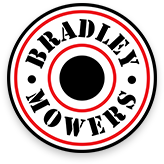Bees are important in the pollination of plants and crops. In addition to honeybees, over 4,000 bee species are pollinators of most of our food crops, such as vegetables. However, the number of wild bees is dwindling due to the increased exposure to diseases, pests, and pesticides. For example, a study conducted in Illinois revealed that for 120 years, the wild bee species went extinct by half. However, humans can reverse this reduction in wild bees’ numbers by creating attractive lawns that are bee friendly, enabling pollinator preservation, and enhancing environmental beauty.
In creating a bee-friendly lawn, an individual must consider where the bees will get their food by planting multiple nectars and pollen-producing plants for the early, mid, and late seasons. Bees also need a source of water, which they can get from plants or from setting up a water area. Bees cover where they can build nests and create a nested block. Here are some ways in which people can attract and support bees on their lawns.
Plant Flower Bulbs and Corms
Flower bulbs are water sources, nectar, and pollen for bees, especially during the spring and winter. Individuals can consider planting flower bulbs for snowdrops, daffodils, crocuses, bluebells, and snakehead fritillary.
Plant Clovers in Your Lawn
Clover plants are beneficial to bees and humans. The different benefits of clovers are that they have a pleasant fragrance during drought, attracting many bees, especially bumblebees. In addition, they maintain a good green cover and require less maintenance involving mowing two or three times a year. When clovers are mowed, they can be used as mulch or create natural fertilizer through a compost heap.
Mix the Lawn With Patches of Low-Growing Flowers
Bees like low-growing flowers such as self-heal. However, ensure that the low-growing flowers you choose are not considered invasive in your country or different seasons. For example, a bird’s foot trefoil is a low-growing flower that appears ragged during the winter because it dies during that season.
Create an Area for Wildflowers on the Lawn
Wildflowers are a great source of nectar and pollen for bees, such as Ox-Eye Daisy, Meadow Buttercup, and Meadow Cranesbill. There are different approaches to creating a wildflower area in the lawn, such as leaving it and seeing what happens, building one from scratch, and plugging.
After creating a bee-friendly lawn, establish a maintenance routine. This regimen can include keeping the grass and flowers tall and exceeding 3 inches, avoiding insecticides and pesticides, or using products with low toxicity levels. Additionally, you should use these products in the early morning when bees are less active, and you should avoid spraying on flowering plants.
